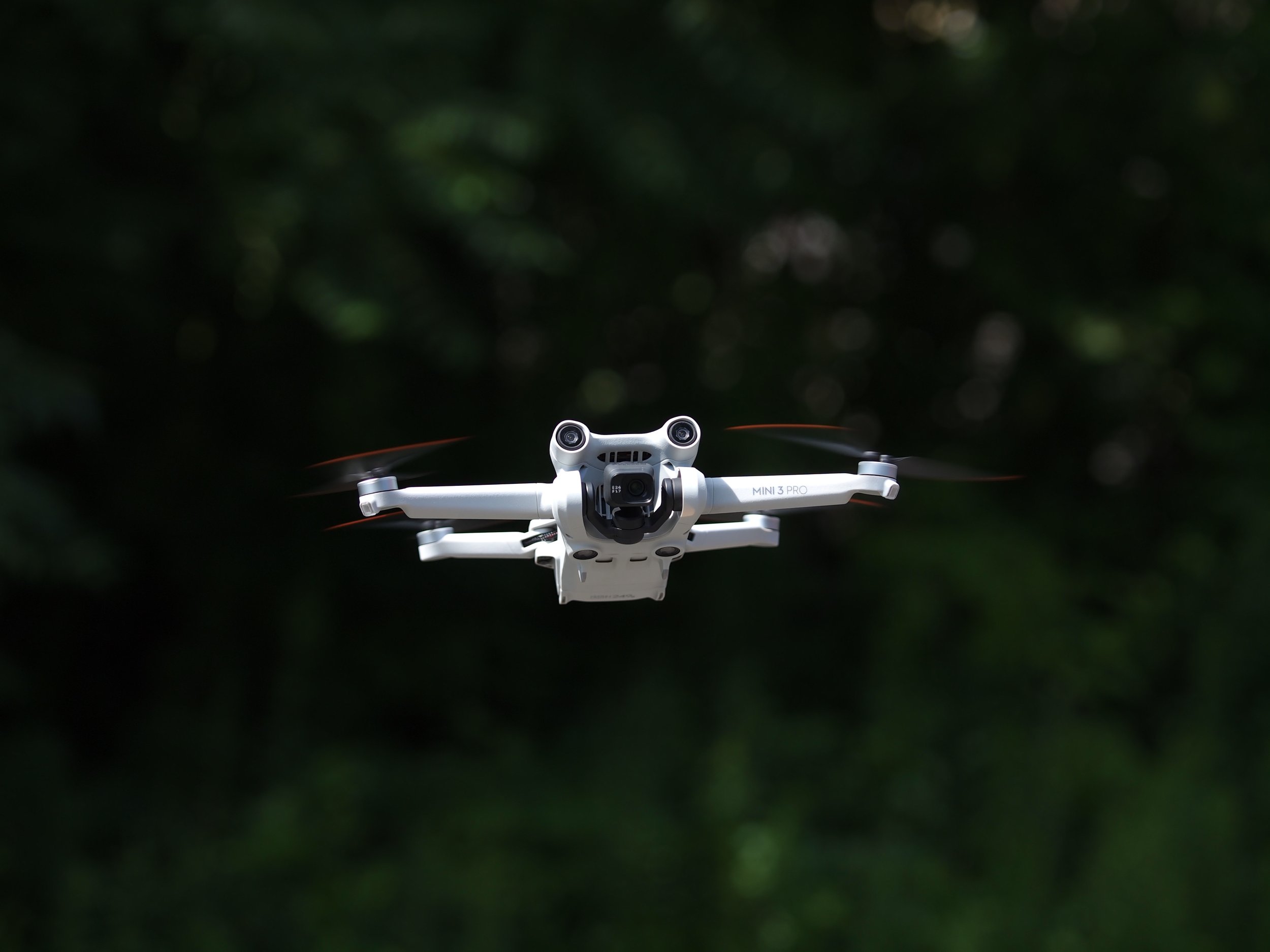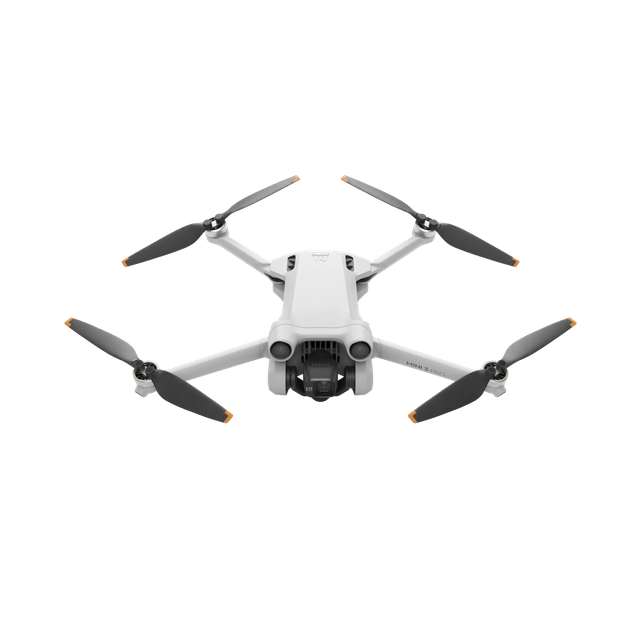Image courtesy of DJI
The DJI website advertises the new Mini 3 Pro as lightweight, affordable, and agile. But does that make it a good drone? And in particular, good for solar surveying use cases?
Scanifly tested the drone with over 20 flights in as many weather conditions as we could: windy, sunny, cloudy, and at night.
In this review, we’re covering key information, the good, the bad, and our official opinion on the drone for solar surveyors.
Key information
Takeoff weight: <249g
Flight time: 34-47 minutes
Dimensions:
-
Folded: 145×90×62 mm
-
Unfolded: 171×245×62 mm
-
Unfolded (with propellers): 251×362×70 mm
Operating temperature: -10° to 40° C (14° to 104° F)
Price: $669-$909 (We tested the $909 model)
DJI Mini 3 Pro: The Good
Sleek look and feel: The drone is small enough to fit in your hand—usually that comes with a flimsy or fragile material feeling—but this drone feels very sturdy for its size. The controller also feels comfortable in your hands and is easy to transport since the sticks are removable from the gimbals.
Quiet, efficient flights: This drone was exceptionally quiet—you couldn’t hear it at all once it reached 20 feet in the air—which is wonderful for personal comfort and residential solar use cases. Otherwise, it flies like every other DJI drone, which is to say it’s smooth and fairly easy to control. One issue is around wind, which we’ll detail more in the “bad” section below.
Great handling: Despite its size, the drone handles well. The obstacle avoidance features are sensitive, which is good considering the drone is so small you likely won’t be able to see all the details when you’re flying high above the ground or behind an obstruction
High-quality camera: The camera quality is amazing for how small the drone and camera sensors are. We were particularly astounded at this—you wouldn’t expect such a good camera at this size and price point. We also liked the vertical photo option (portrait mode) because of its applicability to social media. In a solar use case, marketing with drone images is a huge opportunity, and this camera feature makes it easy to capture media for Instagram Stories, Reels, or TikTok videos.

A picture taken during one of our test flights
DJI Mini 3 Pro: The Bad
Doesn’t stand up to wind well: Simply put, wind is not friendly to any drone under 250 grams. I noticed that even in a light breeze, the drone was struggling—it worked in the end, but it wasn’t as smooth as heavier drones and it took a lot more pilot control. I didn’t get to test in high winds, but based on low-wind performance I wouldn’t feel comfortable using this drone at or near 20 mph winds. Compare this to a larger drone like the Mavic 2 Pro or Autel Evo II Pro 6k, both of which could easily handle higher wind speeds.
The DJI Fly app won’t let you double up features The DJI Fly app works, but it’s not my favorite for solar use cases because some features cannot be used at the same time. For instance, you can’t use orbit flight mode and obstacle avoidance at the same time, both of which are incredibly useful in solar surveying. It’s not a total deal breaker, but it’s definitely an irritation.
No third party apps or SDK allowed: You can’t customize the DJI Fly app via SDK or any third party apps. This is normally how I’d recommend getting around internal app limitations, but DJI won’t let you. Again, not a total deal breaker, but this limitation means you can’t customize the drone’s functionality to solar use cases.
Our Verdict: Is the DJI Mini 3 Pro a good drone for solar surveyors?
Despite its small size, the DJI Mini 3 Pro is a robust and powerful drone. Based on our tests, it’s absolutely viable for solar surveying and is a fun drone to fly.
We share two cautions with this drone: first is that some features can’t operate at the same time due to the DJI Fly app’s limitations. Second, it’s difficult to operate in even moderate winds owing to its very light size. These two issues are not deal breakers since you can work around them, but it makes solar surveying flights slightly more manual and require more pilot skill set.
That said, the issues don’t stop us from loving the drone overall.
If you’re thinking of a new drone for solar, you can absolutely add the DJI Mini 3 Pro to your list of consideration.






